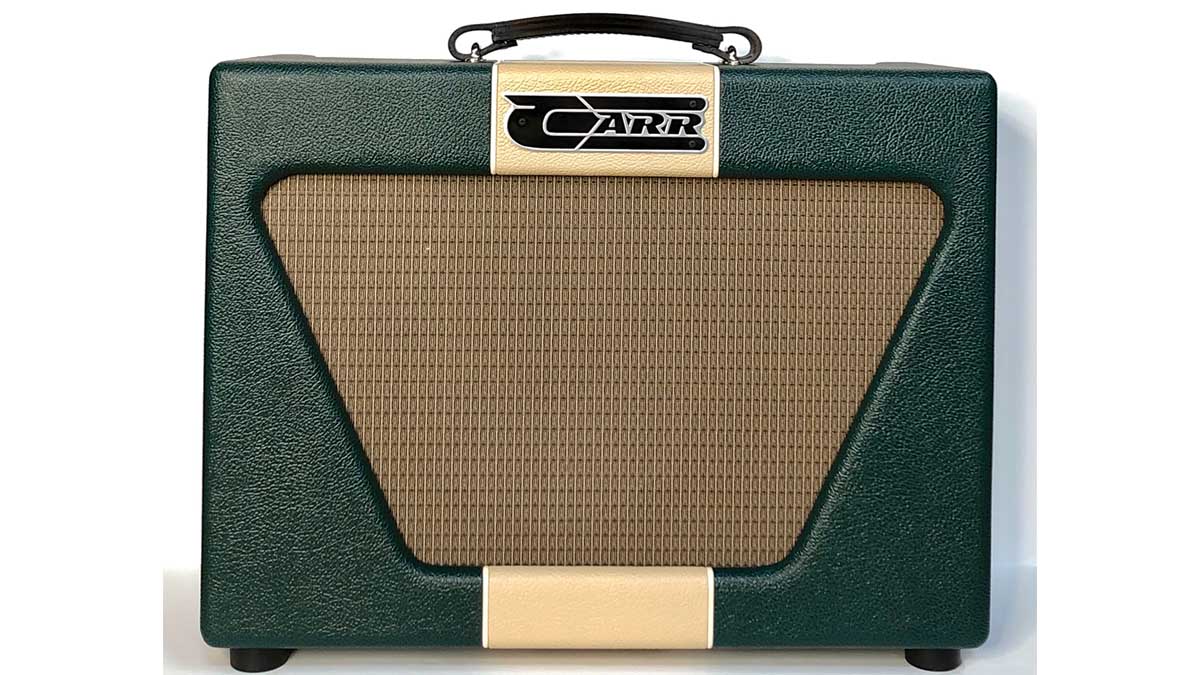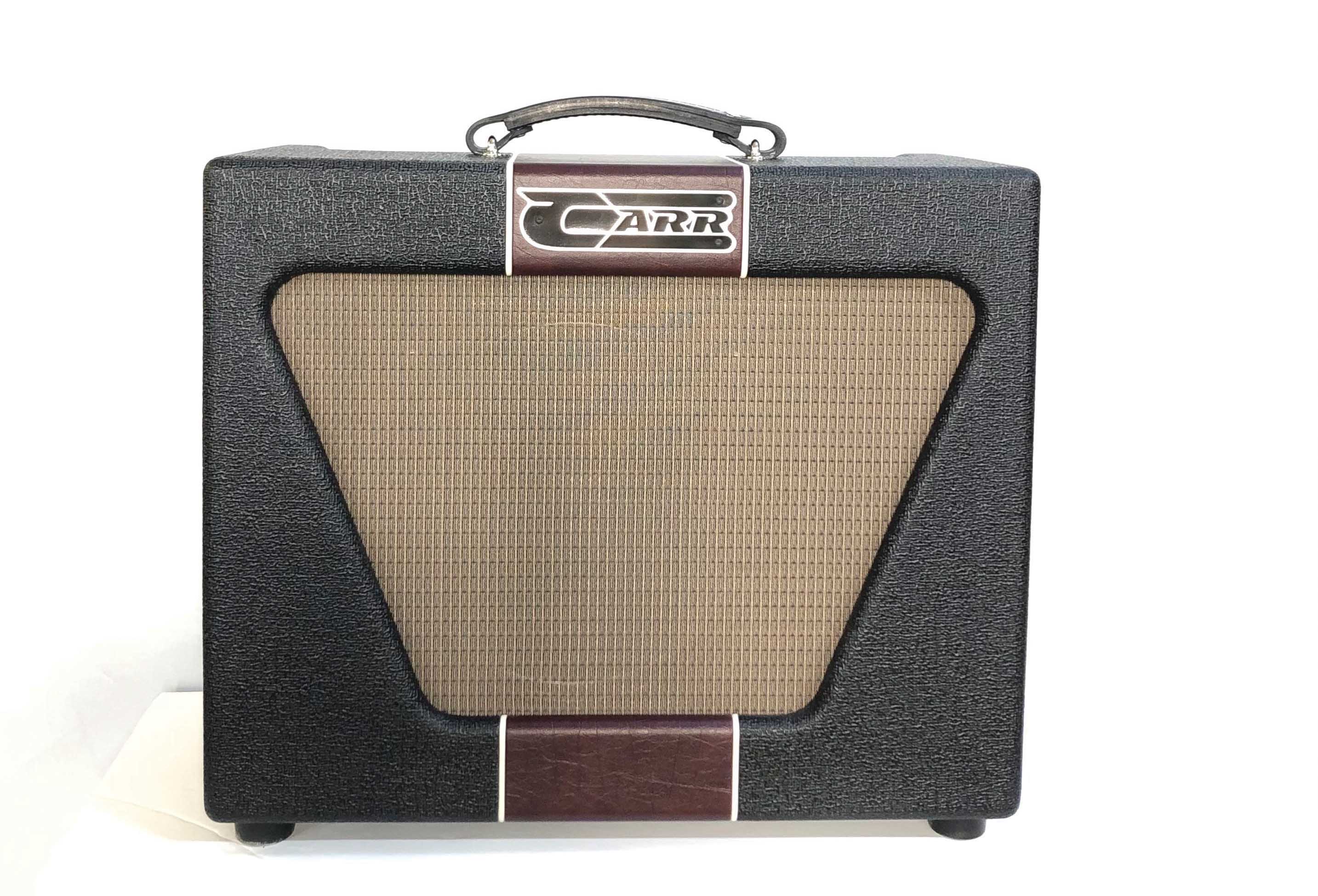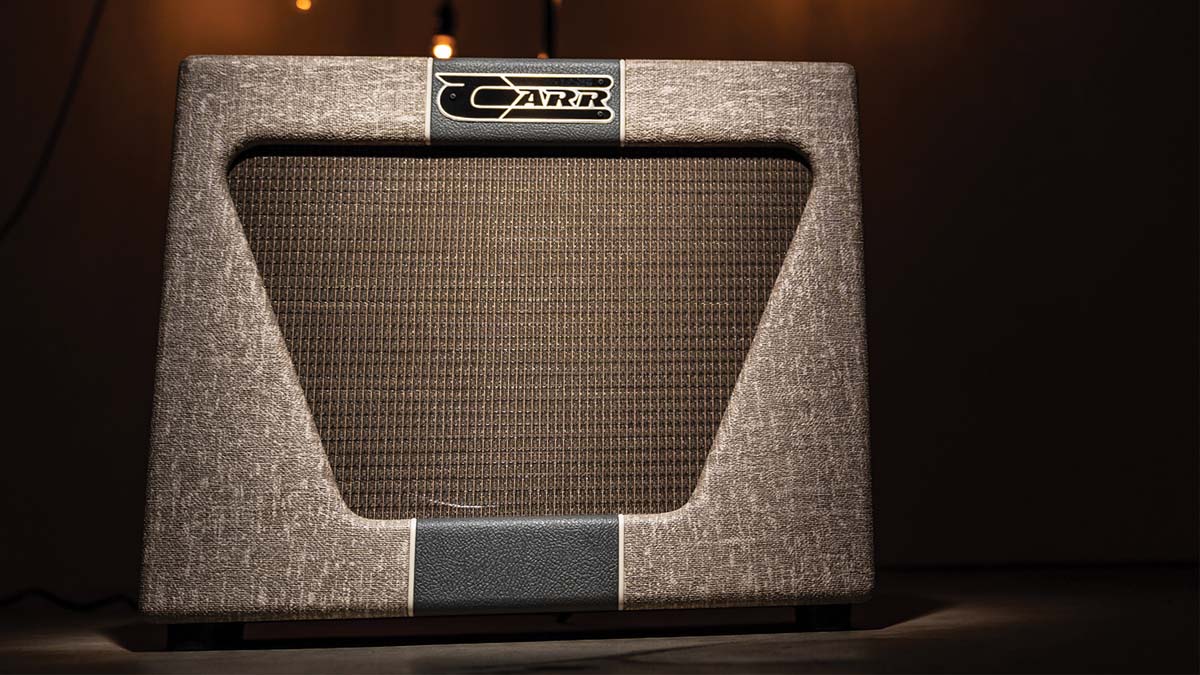GuitarPlayer Verdict
The Carr Super Bee offers a wonderfully musical experience, rich in the sort of touch-sensitivity and dynamics that you would associate with classic Fender combos, and quite possibly the most versatile amp that Carr has built.
Pros
- +
A well-crafted, hand-wired design.
- +
Three flavors of blackface Fender tone.
- +
Onboard attenuator.
Cons
- -
None.
You can trust Guitar Player.
The name Super Bee recalls a famous Mopar muscle car from the late ’60s, but in this case we’re talking about a potent new boutique amplifier from Steve Carr that’s designed to shift through different flavors of blackface Fender tone.
The key to the highway here is the Sting rotary switch, which has three positions: 64 (based on Carr’s own ’64 Deluxe Reverb), 68 (classic medium-gain Super Reverb), and 72 (a blackface-style circuit modded to deliver extra drive and distortion).
Tone shaping is provided by treble, mid, and bass controls, and the amp is equipped with a variable power feature to accommodate practically any performance situation.
This reverb-equipped 1x12 hot rod may be focused on specific Fender sounds, but it departs from the Fullerton platform by featuring a pair of 6BM8 power tubes, which Carr describes as a cross between a 6L6 and a 6V6. But unlike those octal bottles, the 6BM8 is a nine-pin tube that combines a high-gain preamp triode and a power pentode in one package.

Running in cathode bias and fueled by an EZ81 rectifier, the pair gives the Super Bee 10 watts when the attenuator switch is set to the up position (attenuator bypassed), and two watts in the down position, where it can be throttled down to a whisper via the attenuator knob.
Housed within the Super Bee’s aluminum chassis is a point-to-point-wired circuit that also contains two 12AX7 and one 12AT7 preamp tubes, a speaker jack, and send and return jacks for the reverb tank.
Carr offers the amp in a variety of colors, and the solid pine cabinet on our model was smartly attired in blue Tolex with a cream racing stripe and piping accents, and a tan trapezoidal grille. The 40-pound rig is compact and easy to schlep with the stitched-leather handle.
All the latest guitar news, interviews, lessons, reviews, deals and more, direct to your inbox!

Tested with a Fender 70th Anniversary Esquire, a Revered Gristlemaster, and a Gibson ’59 Historic Les Paul, the Super Bee delivered on the performance promise with great tones that range from crisp clean to crushingly overdriven. The 64 setting serves up warm, dimensional low-gain sounds that have that scooped-mid signature of the Deluxe Reverb.
It’s a characteristic of the breed and works well with boost and overdrive pedals. The Super Bee actually uses a larger-than-stock mid cap to further enhance the scooped response – something that was noticeable when comparing it with a reissue Deluxe Reverb.
Carr also points out that the ’64 Deluxe had larger-value reverb dry-signal pad resistors than were used afterward, which he says gave it more tonal shimmer. So it follows that the similarly configured Super Bee has a cool glassiness in the top end that’s well presented with single-coils and low-wind humbuckers. Slather on some lush spring reverb and it’s a glorious take on a vintage blackface Deluxe.

Contrastingly, the 68 setting unleashes the bold, presence-y delivery of a late-’60s Fender Super Reverb. It’s a tactile and responsive tone that really stands out when played on the edge of breakup or driven into distortion with pedals.
I dig the Super Bee’s gravelly texture and mids-forward punch when you push it hard, and it’s very loud and dynamic for a 10 watter. The Super Bee’s fiery blues tone on the 68 setting is a blast and perfect both for recording and for applications that don’t require the volume that a Super Reverb’s 50 watts of 6L6 power and four 10-inch speakers deliver.
It could easily stand on its own if you didn’t have the option of shifting into overdrive with the aggressive 72 setting. This calls on a classic modding technique for getting more gain from Fender amps by moving the level-reducing tone stack from in-between the first and second gain stages to after those stages, allowing them to drive each other harder and generate more gain.
The architecture is similar to that of an old Marshall or some Fender tweed amps. In this mode, the grind comes on pretty quickly, and by one o’clock on the volume dial, the amp is pumping out a fat, sustaining, and slightly compressed tone, with lots more saturation available as you turn it up.
It’s a great mode if you like to go from dirty to dirtier by riding the guitar’s volume knob. In fact, for many players, the 72 setting may be all they need for rhythm and lead, although it would be cool to be able to foot-switch between the three circuits.
That said, the Super Bee offers the most flexibility of any Carr amp to date, and it still preserves all of the tonal richness, touch responsiveness, and complexity/dimensionality that players dig about these inspiring point-to-point designs.
- PRICE: $2,490 base (black). $2,640 as tested with two-tone covering. $2,430 base for 1x10
- CHANNELS: 1
- CONTROLS: Volume, Sting rotary switch (64, 68, 72), treble, mid, bass, reverb. Attenuator control and switch
- POWER: 10 watts, switchable to 2 watts and variable down to zero watts
- TUBES: Two 12AX7s, one 12AT7, two 6BM8 power tubes, EZ81 rectifier
- SPEAKER: 12” Carr Valiant (8Ω)
- EXTRAS: Tube powered reverb. Variable power. Custom colors available: Regular ($100), Two Tone ($150) and Exotic ($200)
- WEIGHT: 40 lbs
- BUILT: USA
- CONTACT: Carr Amplification

Art Thompson is Senior Editor of Guitar Player magazine. He has authored stories with numerous guitar greats including B.B. King, Prince and Scotty Moore and interviewed gear innovators such as Paul Reed Smith, Randall Smith and Gary Kramer. He also wrote the first book on vintage effects pedals, Stompbox. Art's busy performance schedule with three stylistically diverse groups provides ample opportunity to test-drive new guitars, amps and effects, many of which are featured in the pages of GP.

